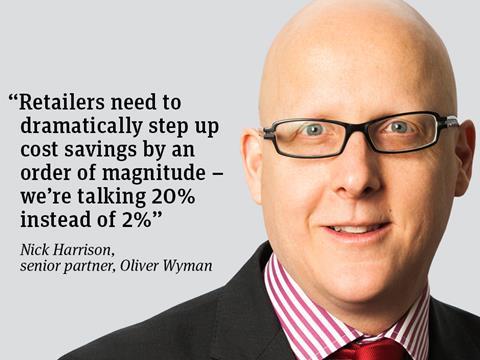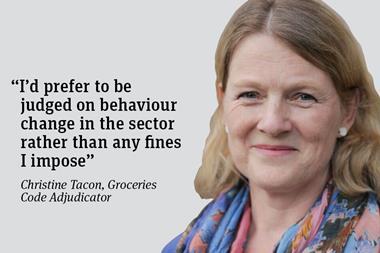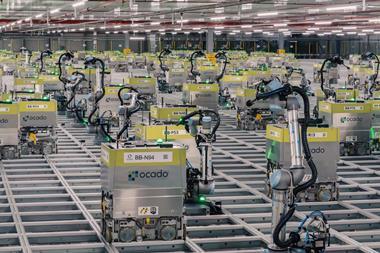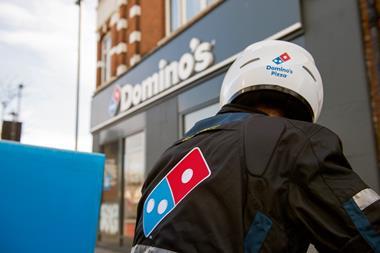
Cost is always on any good retailer’s agenda. Cost inflation is usually higher than price inflation, so the business must continuously generate efficiencies to maintain the same level of profitability. However, this treadmill can generate an incremental approach to cost: squeezing out a little more each year, salami-slicing labour budgets, pushing suppliers a bit harder, challenging expense budgets.
Such programmes are part of the day-to-day for most retail executives. But in today’s market such incremental efforts are no longer good enough.
Faced with flat demand, excess space, and competition from lower-cost business models, what many retailers really need to do is dramatically change their cost position by stepping up cost savings by an order of magnitude - we are talking some 20% instead of 2%.
Other industries have already lived through this: over the past decade, to remain profitable as the average revenue brought in by each user has declined, mobile telco operators across Europe have had to cut business costs per subscriber by up to 30%. Similarly, retail banks are cutting costs dramatically as their products have become digital and physical branches are needed less and less.
For the first time we’re seeing many retailers getting ready to look at cost step-change programmes. A few years ago step-change conversations on cost were rare in retailers; today they are common.
So how can a retailer step-change its cost position? One way is to move from incremental reductions in head office staff to a zero-based approach to each function, where the focus is on tasks that are truly business-critical or with a real business case - eliminating “nice to have” activities. Across the business it’s also important to examine radical process simplification and automation - for both internal and customer-facing activities - learning lessons from the new breed of digital retailers.
By taking out significant amounts of ‘tail’ range in categories where customers do not value a broad choice, the customer proposition can be engineered to simplify it in places where customers don’t notice or mind the change.
Removing range needs to be done carefully; but, if the reductions are focused on duplicative products and/or categories that are not “choice elastic” then the sales hit can be minimised and sometimes reduced to zero.
The final activity that can bring about a cost step change is simplifying and rationalising the supplier base to collaborate much more closely with a smaller number of suppliers and get significantly better terms as a result.
The outcomes from a step change in cost position can be dramatic: our team worked with one discount retailer to design and deliver a programme that generated a reduction in store costs of over 30% and a cut in supply chain costs of over 20%.
Clearly, changes such as these can’t be delivered overnight, but expect to see more retailers in more markets attempting such programmes in the next few years.
Nick Harrison is a senior partner with Oliver Wyman



















No comments yet